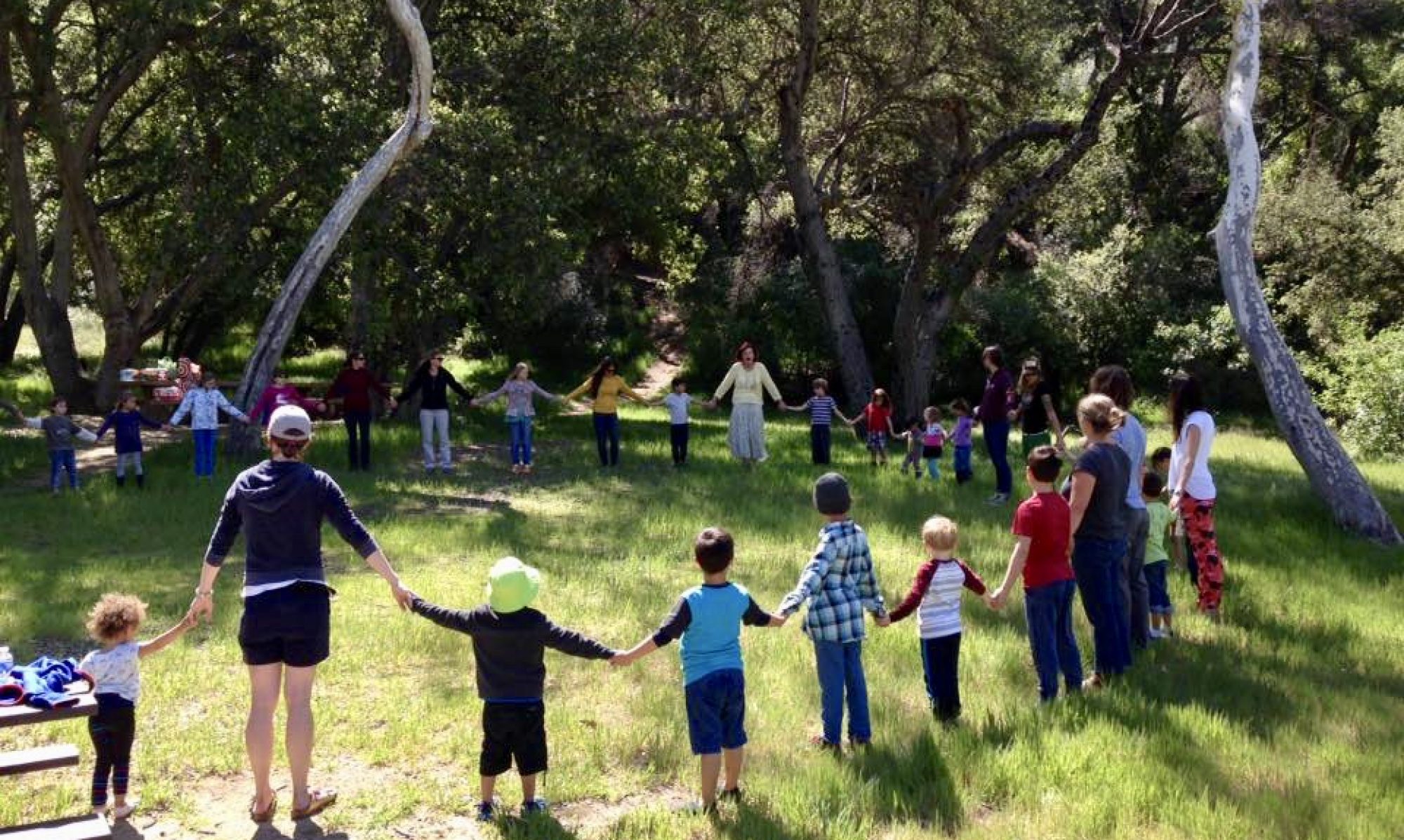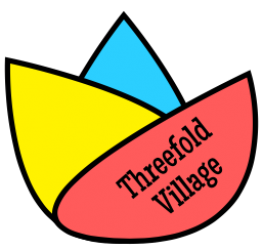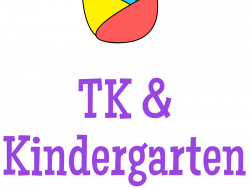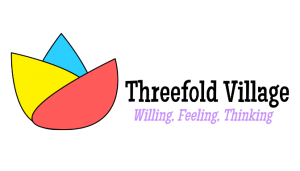Transitional Kindergarten and Kindergarten
Threefold Village Transitional Kindergarten and Kindergarten program nurtures homeschooling families through quality, diversity, and adaptability. Hosted by a venerable Waldorf Certified teacher of more than 20 years experience, children will be met with respect and individual recognition each morning and nurtured throughout the day.
Here is a letter from our teacher to all prospective parents…
Skip to the bottom for enrollment options.
KINDERGARTEN AT THREEFOLD VILLAGE
When a child experiences kindergarten for the first time, it is often a moment of excitement or trepidation. Some children are eager to begin a new phase of their life and others are hesitant and cling to their parent. Both of these reactions are perfectly normal. My hope is that each child will in time feel embraced by warmth, beauty, and love. I want them to step into their classroom and immediately feel that it is a safe and child-friendly space.
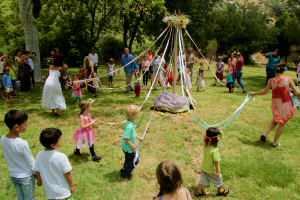
As a teacher who has taught in both public and Waldorf schools, I remember the first time I entered a Waldorf kindergarten. I was awestruck. It felt very different from the typical flashy classroom decorated with bright primary letters, numbers, and characters depicting good character traits. In our classroom, the walls will be lazured in a rosy hue with soft flowing silk curtains, a seasonal nature table, play stands lined with baskets filled with wood blocks, silks, wooden and knitted animals, glass beads (fairy tears), hand-made human and animal puppets, and natural objects such as pinecones, seashells, or rocks.
There will be a kitchen and baby area, a space with hollow blocks, wooden cars and trucks, a fairy/gnome tree house, a barn with animals, a castle with knights, a doll house, and, of course, a rocking horse and wooden boat. How fun – there will be so many objects to awaken the young child’s natural ability to play.
The environment is important in that it is the first visual experience that the child encounters. However, a beautiful space is purely materialistic. As a teacher, I strive to support the fundamental physical, psychological, and social needs of a child in the formative years of kindergarten. These include a respect for how children learn from birth to seven, how children thrive with a healthy rhythmic life, how children yearn for an assurance that goodness and beauty outweigh that which is evil, and how adults can support the formative forces that are developing the child’s body.
In a Waldorf kindergarten, teachers understand that children learn through imitation, work through all of their experiences and social interactions through play, rely and feel safe knowing how their day will proceed, and trust that their teachers will be there to support and guide them with warmth and love in their interactions and experiences.
Every day the children will be guided with a rhythm that alternates between an “in breathing” and an “out breathing.” Children and adults experience these two very differently. An adult feels an outbreath (a relaxed feeling) when told a story. However, this is considered more challenging for a child who must sit still and listen carefully. Children are just beginning to form picture images within and this takes work! Free play, both indoors and outdoors, is considered an outbreath. Circle time gathers the children into a circular form and combines seasonal songs and verses with movements. For a child, this is definitely an inbreathing experience. Within a day, we will take a nature walk (outbreath), engage in circle time (inbreath), participate in a group activity such as painting or baking (outbreath), indoor play (outbreath), clean-up (inbreath), rest time (out breath), lunch and snack (outbreath), story time (inbreath).
One of the most important aspects of the early childhood years is recognizing the importance of the child’s need for doing things. They want to play, but they also want to participate in real work. That is why imitation plays such as important role in early childhood education. Adults must be worthy of imitation. Children want to help us clean (sweep the floors, clean the table, wash the dishes, care for the toys, etc.). They also want to learn how to bake, sew, plant seeds, weed the garden, etc. The more we support the will forces in the child (the doing), the more we prepare him or her for their formal introduction to academics in the first grade. When we strengthen their will forces by allowing them to do things for themselves, we are giving them a gift – the gift of self-reliance.
As I stated before, story-telling is an integral part of kindergarten. Children are told a story every day. This often is one of the favorite times in the day for both the teacher and the child. Fairy tales are told in the oral tradition. The teacher chooses tales that are appropriate for the age of the child and the season. The same fairytale will be told over a period of weeks so that it resides deeply in the soul of the child. True fairytales need no explanation or moralization. They speak directly to the child and are considered soul food.
Nature stories are told on alternate days and are based on the antics of animals, gnomes, fairies, etc. The children delight in all of the stories and are especially thrilled to see both fairytales and 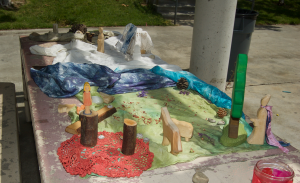 nature stories presented as puppet plays.
nature stories presented as puppet plays.
I will write a weekly newsletter that will give an overview of the circle and story themes and the sewing, artistic, and practical skills activities. Hopefully, we will have opportunities for parent nights where I will be able to bring more insight into the work of the kindergarten.
The daily rhythm will be a work in progress as the class begins at 10:00, a bit later than conventional “school.” Therefore, the times are likely to shift to meet the children’s needs and rhythms.
10:00 Families arrive and are greeted by me. An adult will initially escort families to the classroom. Kelly will be inside and tables will be set up with quiet activities for the children.
10:15 Nature Walk
10:35 Return, change into indoor shoes, bathroom and washing of hands. I will be on the carpet greeting the children.
10:50 Circle time
11:15 Artistic or baking group activity
11:35 Clean-up
11:40 Inside play (handwork activities will be added after the first week)
12:30 Clean-up
12:40 Lunch (I may read a story during mealtime)
1:00 Outside play
1:40 Inside/rest time/lullabies
2:10 Story time
2:25 Snack
2:40 Clean-up
2:45 Outside games or free play until parent’s pick up.
I look forward to meeting all of you!
Fondly,
Leigh Hart
- Sorry, this product cannot be purchased.
Showing the single result
